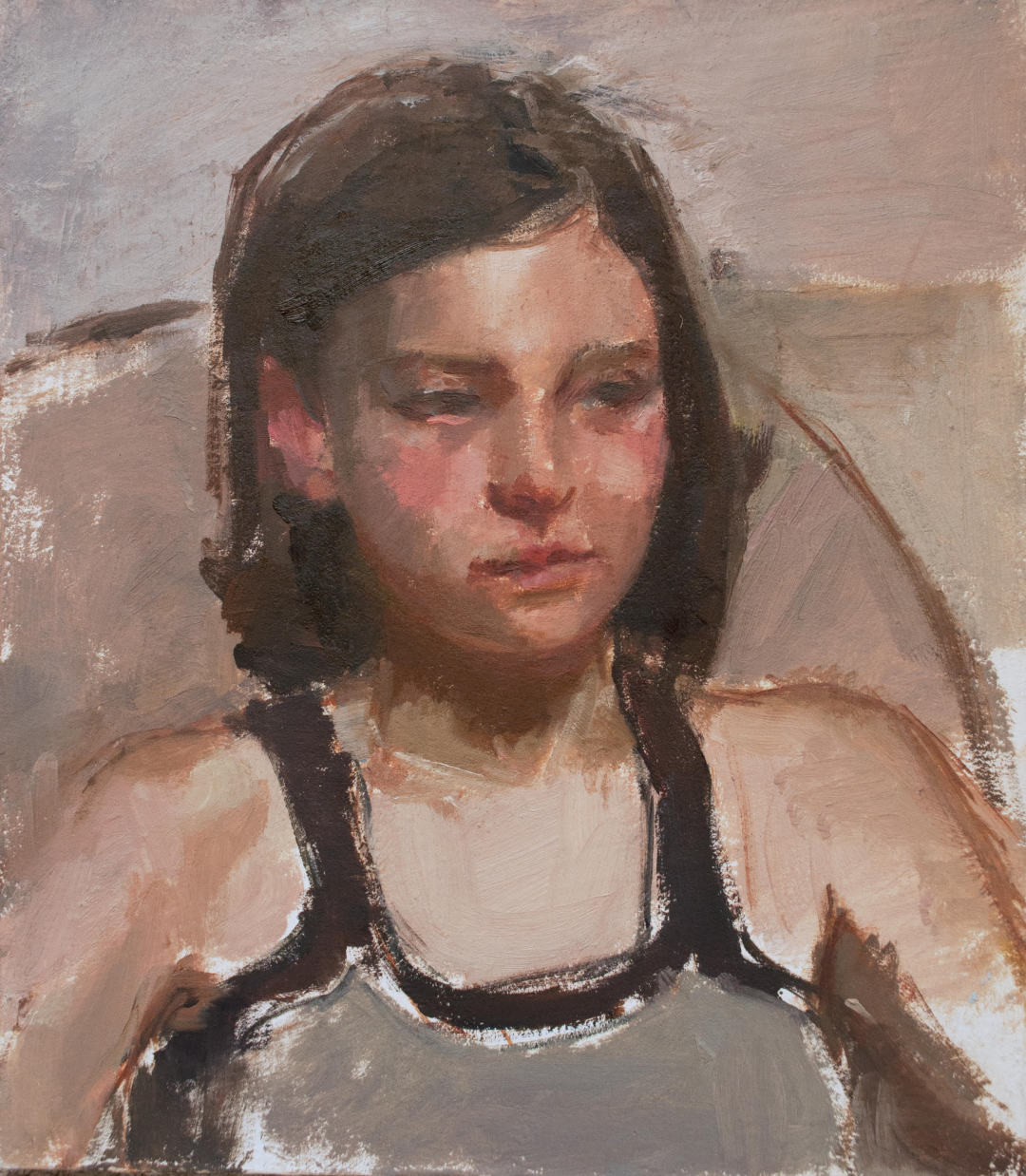Introducing the Secrets Behind Meaningful Figurative Oil Painting Styles
Introducing the Secrets Behind Meaningful Figurative Oil Painting Styles
Blog Article
The Role of Feeling and Expression in Metaphorical Oil Paint: An In-Depth Analysis of Topic and Make-up
The interaction of emotion and expression in figurative oil painting serves as a crucial lens via which one can examine the complex connection between subject matter and composition. Artists harness various methods, from shade selection to brushstroke characteristics, to grow emotional vibration within their works.
Understanding Emotion in Art
Feeling in art acts as a powerful avenue for expression, allowing artists to convey complex feelings with their job. In metaphorical oil paint, this emotional deepness is frequently portrayed through the depiction of the human number, catching the nuances of human experience. The choice of topic, shade combination, and brushwork all contribute to the emotional vibration of an item.
Artists often attract upon personal experiences, societal concerns, or global themes to stimulate feelings in the visitor. As an example, a picture may mirror susceptability, while a dynamic number in activity can signify freedom or turmoil. These psychological threads attach the audience to the art work, promoting a dialogue that transcends the visual tool.
Additionally, the interplay between light and shadow can magnify emotional intensity, directing the audience's look and accentuating specific elements within the structure. The use of texture in oil paint even more adds layers of intricacy, inviting a responsive response that enhances the emotional experience. Generally, understanding feeling in art is important for valuing the subtleties that characterize metaphorical oil paint, as it transforms plain representation into a profound expedition of the human condition.
Crucial Element of Make-up
In the world of figurative oil painting, the structure offers as the underlying framework that organizes visual components and enhances the emotional narrative. Essential elements of structure consist of balance, comparison, centerpiece, and rhythm, each adding to the total impact of the artwork.
Balance describes the distribution of aesthetic weight within the painting, which can be attained through symmetrical or unbalanced plans. A healthy make-up offers security, permitting the viewer to engage with the piece harmoniously - figurative oil painting. Contrast, on the other hand, involves comparing different aspects, such as dark and light or cozy and awesome colors, to lead the audience's eye and stimulate emotional reactions
The focal point is important, as it directs interest to the most substantial component of the painting, commonly highlighting the emotional core of the story. Via strategies like shade saturation or placement, musicians can highlight this area efficiently. Last but not least, rhythm refer to the repetition of aspects, producing a sense of activity and flow throughout the composition. By skillfully incorporating these crucial elements, musicians can craft engaging and mentally resonant figurative oil paints that mesmerize and engage their target market.
Subject Matter and Its Influence
Subject issue plays a crucial function in figurative oil paint, as it not just acts as the foundation for the story yet also shapes the customer's analysis and psychological engagement with the artwork. The selection of subject matter-- be it a solitary number, a group dynamic, or a thematic depiction-- directly influences the psychological atmosphere conveyed to the audience.

As an example, pictures often evoke personal links, disclosing the intricacies of human expression and character, while scenes depicting common activities can create a sense of belonging or fond memories. Furthermore, the social and historical context of the subject matter enriches the visitor's home understanding, prompting much deeper representations on social norms, values, and the human problem.
Various subject matters also produce differing levels of interaction; a remarkable conflict portrayed via numbers in tension might elicit sensations of stress and anxiety or compassion, while calm landscapes can conjure up serenity and consideration. Eventually, the effect of topic in metaphorical oil paint is profound, as it functions as an avenue for psychological vibration, directing the visitor's feedback and interpretation, and cultivating a link between the onlooker and the art work. This interaction is essential for the successful interaction of the artist's intent.
Methods for Stimulating Feelings
The efficiency of metaphorical oil painting in sharing feelings is dramatically affected by the techniques used by the musician. Among one of the most crucial techniques is the use of color theory, where the strategic option of colors can evoke specific emotional reactions. Cozy colors, such as reds and oranges, typically elicit sensations of interest or hostility, while cooler tones like blues and greens have a tendency to stimulate calmness or sadness.
An additional essential method is the adjustment of light and darkness, recognized as chiaroscuro. This technique enhances the three-dimensionality of figures, producing dramatic contrasts that can escalate emotional deepness. The placement of light can guide customers' emotions, highlighting particular components of the composition.
Brushwork also plays an essential function; loose, meaningful strokes can convey energy and spontaneity, whereas smoother techniques i thought about this may recommend harmony or accuracy. The plan of subjects within the make-up can affect emotional impact. Close proximity can recommend intimacy, while range might indicate isolation.
Eventually, the combination of these techniques makes it possible for musicians to craft stories that resonate with the visitor, changing a plain visual experience right into an evocative psychological trip. - figurative oil painting

Case Research Studies of Significant Works
Examining significant jobs of metaphorical oil painting exposes just how different techniques are used to evoke effective feelings. One excellent situation is Edvard Munch's "The Scream," where the altered figure and swirling background share existential fear. Munch's use shade-- deep blues and dazzling oranges-- escalates the psychological effect, showcasing exactly how palette options can form audience experience.
Another significant work is Pablo Picasso's "Les Demoiselles d'Avignon." Right here, strong brushstrokes and fragmented forms show a troubled psychological landscape, challenging conventional representations of the women number. Picasso's innovative composition not just captures the audience's attention however additionally welcomes contemplation on themes of identification and sexuality.
In Addition, Frida Kahlo's "Both Fridas" supplies a poignant expedition of duality and self-identity. The different numbers, connected by a shared heart, exemplify Kahlo's emotional depth and personal narrative. figurative oil painting. Her meticulous attention to information and symbolic elements serve to involve audiences on a visceral level
These study underscore the profound connection in between emotion and composition in metaphorical oil painting, disclosing how artists harness technique to communicate complex feelings and stories that reverberate throughout time and culture.

Conclusion
To conclude, the interaction of emotion and expression in metaphorical oil painting significantly enhances the viewer's experience and interpretation of the art work. With a careful choice of subject issue and compositional techniques, artists share profound stories that resonate on both global and personal levels. The application of color theory, brushwork, and chiaroscuro more magnifies emotional deepness, changing each canvas right into an effective representation of the complexities of the human experience.
In metaphorical oil paint, this emotional depth is often portrayed through the representation of the human number, capturing the nuances of human experience.Moreover, the interaction in between light and darkness can enhance psychological strength, guiding the viewer's stare and drawing focus to certain components within the make-up. discover here The usage of texture in oil paint additionally includes layers of complexity, inviting a tactile feedback that improves the psychological experience.The focal factor is important, as it directs attention to the most considerable component of the painting, frequently highlighting the psychological core of the story. Inevitably, the influence of subject matter in metaphorical oil paint is extensive, as it offers as an avenue for psychological resonance, directing the visitor's response and interpretation, and cultivating a link in between the art work and the viewer.
Report this page